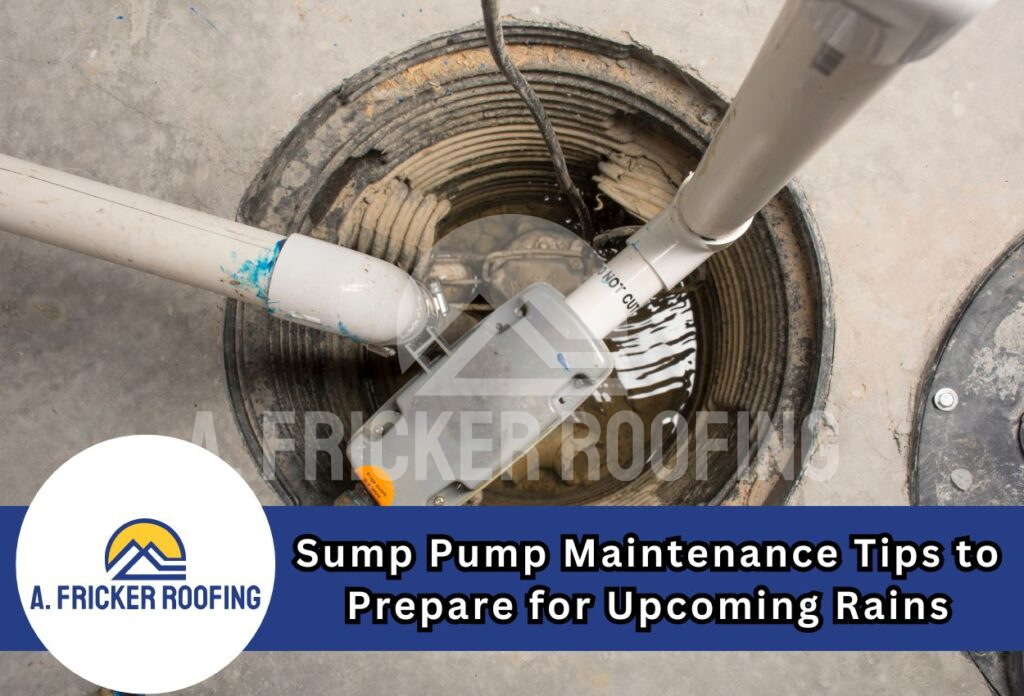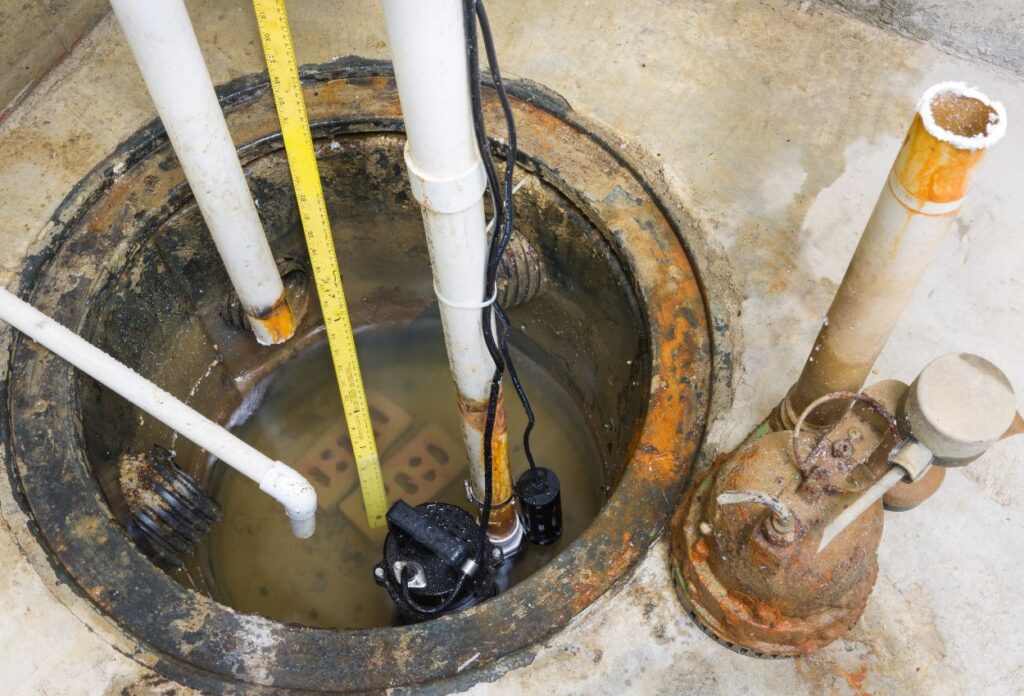
As spring and summer approach, so do heavy rains in Oklahoma, which means a higher chance of flooding within homes. This is especially true if your sump pump isn’t in the best working condition.
This is where maintenance comes in as such an important element. When properly maintained, it can prevent expensive water damage and protect your property’s foundation.
Your sump pump has several parts, and all of them need to work correctly to keep water out.
Neglecting routine maintenance can leave you with a flooded basement when you least expect it. To help you prepare for the upcoming season, we’ve compiled a comprehensive guide on sump pump maintenance tips every Oklahoma homeowner should follow.
Why Sump Pump Maintenance Matters
A sump pump is your home’s first line of defense against water damage in your basement or crawl space if it becomes flooded. Its job is to collect and redirect water away from your home, and it sits in a pit (sump basin) in your basement or crawl space. When groundwater levels rise due to rain, the pump activates and pushes the water away from your foundation.
Since it is slightly below ground level, it’s more than likely that you’ve forgotten it’s even there, and this neglect can lead to issues. Whether it’s because of clogging, power issues, or mechanical wear, a malfunctioning pump during a heavy storm can lead to basement flooding, mold growth, and expensive repairs.
By investing a little time in maintenance now, you can avoid significant headaches and expensive water damage later.
Sump Pump Maintenance Tips To Keep In Mind

Test Your Sump Pump Regularly
You shouldn’t wait until a severe storm hits Oklahoma to find out whether your sump pump works. Here’s how to test it:
- Pour Water into the Sump Basin: Slowly pour a bucket of water into the sump pit until the float rises. This should trigger the pump to activate.
- Observe the Discharge: The pump should remove the water efficiently. If it’s slow or fails to activate, there may be a problem with the switch or the pump itself.
- Listen for Unusual Noises: Grinding, rattling, or humming sounds indicate potential mechanical issues.
✅ Tip: Test your sump pump at least once a season — especially before heavy rains begin.
Clean the Sump Pit and Pump Components
Dirt, gravel, and debris can accumulate in the sump pit over time, potentially clogging the pump or interfering with the float switch. This makes it a good idea to clean your sump pump in spring, and have it ready for rain:
- Unplug the Pump: Always disconnect the power before cleaning.
- Remove Debris: Use a wet/dry vacuum or a gloved hand to remove dirt and sludge from the pit.
- Clean the Pump Screen or Inlet: Clogs in the inlet screen can restrict water flow. Rinse the screen to ensure it’s clear of obstructions.
- Flush the Discharge Line: Run water through the discharge pipe to confirm it is clear of blockages.
✅ Tip: Perform a deep cleaning at least once a year or more frequently if your pump handles heavy use.
Inspect the Power Source
A sump pump is only as reliable as its power supply. To avoid power-related failures, ensure the pump is properly connected to a ground-fault circuit interrupter outlet. Most contractors will also refer to it as a GFCI outlet.
Here is how to do it:
Inspect The Power Cord
Check the power cord for any signs of wear or damage. Since heavy storms often lead to power outages, it’s worth installing a battery backup system. This ensures your sump pump keeps running during blackouts, providing continuous protection.
Consider A Water-Powered Sump Pump
Alternatively, if you have access to municipal water, you can consider a water-powered backup pump. This operates without electricity but is more useful as a secondary sump pump. Testing the backup system regularly is essential to confirm it activates when needed. This added protection can prevent flooding during severe weather events.
Inspect the Float Switch
The float switch is a crucial component that activates the pump when water levels rise. If it becomes stuck or malfunctions, the pump may fail to turn on during a storm. To keep it functioning properly, here are some tips:
- Check that the float moves freely without obstruction for proper functionality.
- Reposition the float switch if it is misaligned or tangled to ensure the pump activates when necessary.
- Be aware that the float switch can wear out over time, particularly in older pumps.
- If you notice inconsistent activation, consider replacing it.
- Regularly test the float switch to ensure reliable pump operation during heavy rain.
Verify the Check Valve Operation
The check valve prevents discharge from flowing back into the sump pit. A faulty or missing check valve can cause continuous cycling, which reduces the pump’s efficiency and increases wear.
- Locate the check valve on the discharge pipe.
- Ensure the valve is installed in the correct direction for proper water flow away from the pump.
- Test the valve’s operation by pouring water into the pit.
- Observe if the pump efficiently discharges water without backflow.
- If water returns to the pit, consider replacing the valve.
- Install a new check valve with an airtight seal for optimal performance.
Inspect the Discharge Pipe
The discharge pipe plays a crucial role in directing water away from your home. Here are some key pointers to keep it functioning effectively:
- Inspect for Blockages: Regularly check the pipe for obstructions like dirt, leaves, or ice, especially in colder months.
- Extend If Necessary: Ensure the discharge pipe extends at least 10 feet from your foundation to direct water safely away.
- Safe Drainage Area: Direct the water towards a safe drainage area to prevent backflow into your basement.
- Consider Freeze Guards: In winter, ice can block the pipe, so installing a freeze guard can help prevent clogs.
- Monitor During Rainy Seasons: Keep an eye on the discharge line during periods of heavy rain to avert unexpected flooding.
When to Call a Professional for Your Sump Pump Maintenance
While regular maintenance can prevent many issues, certain situations require the expertise of a waterproofing professional. If you notice frequent pump cycling, unusual noises, or persistent water in your basement despite the pump running, it’s time to call in an expert. These could be signs that your pump isn’t functioning properly or that your basement waterproofing system isn’t adequately handling water entry.
Our professionals can inspect and diagnose potential problems such as foundation cracks, improper drainage, or issues with your sump basin.
Basement Waterproofing Done Right With Oklahoma’s Finest Contractors
Need expert sump pump maintenance or waterproofing services in Oklahoma? Contact our team at A. Fricker Roofing and Waterproofing today. We specialize in protecting homes from water damage. We offer reliable solutions that keep your basement dry all year round. Connect with us at (918) 402-7167 for the best in class interior and exterior basement waterproofing.


